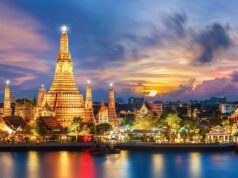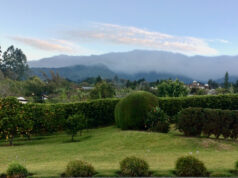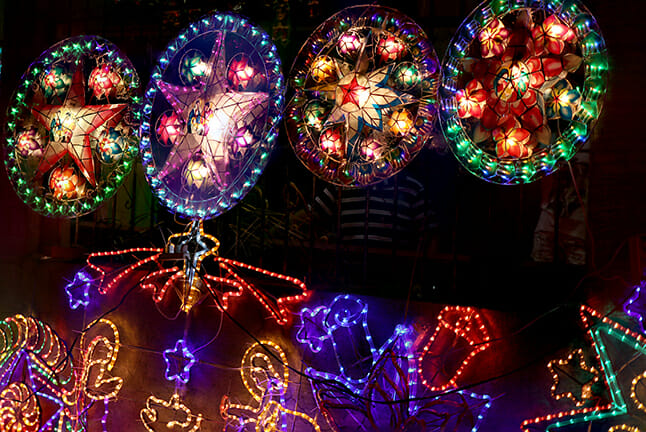
The traditions that make the long Filipino Christmas season so rich and anticipated
Christmas is my favorite time of the year. I love giving gifts and receiving them. (Let’s not underestimate that aspect.) In addition to Christmas gifts, the festive surroundings, the joyful Christmas songs, and my observation that people are kinder is why, in general, I love Christmas.
I’ve been living in the U.S. for more than ten years now. And aside from missing my family and friends, I do miss one thing in the Philippines – Christmas, or Pasko in Tagalog.
These traditions are the reasons:
- The Christmas season kicks off on September 1. I am not kidding. Malls start to put up Christmas decorations in September. You will hear your favorite Christmas songs on the radio. Filipinos like to start celebrating early and have a countdown to big celebrations. We love anything that will allow us to celebrate special occasions with the opportunity to spend more time with our loved ones. The 100 Days before Christmas Countdownstarts on September 16. It serves as a reminder that it’s time to create our shopping lists and plan our Christmas parties. We observe the “ber” months in the Philippines – September to December. I love counting the “ber” months as well. It also means a Christmas bonus is coming.
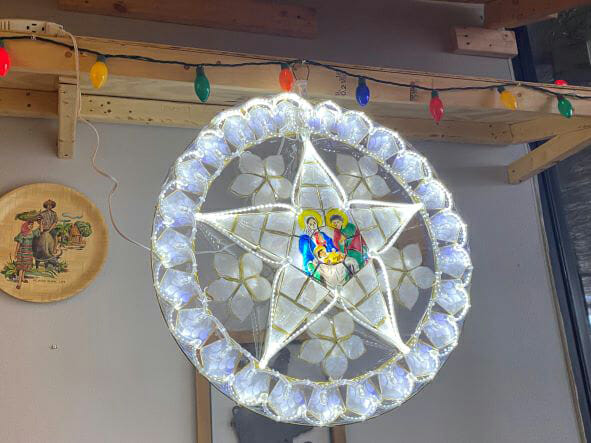
- Simbang Gabi (Tagalog), Misa De Gallo (in Spanish), or Dawn Mass is a uniquely Filipino Christmas tradition. There is a series of nine dawn masses that begin on December 14 and end at midnight on December 24. This tradition dates to the early days of Christianity when the Christmas season was also the harvest season. Filipinos went to church in the evening to hold thanksgiving novenas. Later, the night masses evolved to become dawn masses to allow the farmers to participate before going to their work. Most churches start the dawn mass at 4:00 AM. The sacrifice of waking up early in the morning is a gesture of faith and gratitude for many Filipinos. Some believe their wishes will be granted if they complete the nine masses. (There’s no harm in merely hoping your wishes will come true, right?) After the mass, I would anticipate eating bibingka (rice cake with salted egg), puto bumbong (purple rice cakes steamed in bamboo tubes) and drinking salabat(ginger tea). All of these (my) favorites are commonly sold in the vicinity of the churches.
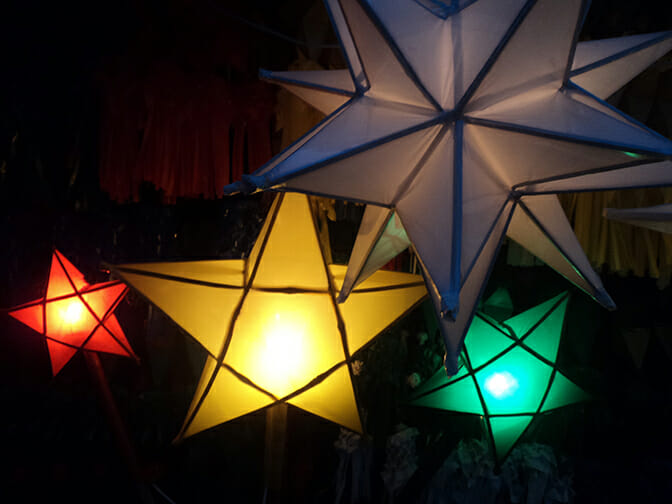
- Christmas parties are a much-awaited part of Christmas celebrations for Filipinos. As noted earlier, we Filipinos start scheduling and planning our Christmas parties early and log them into our calendars so we don’t miss anyone’s party. We bring our favorite dishes or contribute money to the organizers. Christmas is the season of gift giving. It means we spend more during this time of year but in a good way. The Filipino version of exchanging gifts is called “Monito, Monita.” It’s like Secret Santa, usually done among friends, classmates, or officemates, and the revelations occur at the Christmas party. During my years at the U.S. Embassy, I remember the excitement of arriving to work in the morning and finding a gift on my desk from my Secret Santa. That was always fun!
- Noche Buena is another most-awaited Filipino Christmas tradition. The family, and sometimes relatives and friends, gather on Christmas Eve to eat the food on the table. This is the Filipino version of Thanksgiving dinner, which consists of traditional foods from family recipes. Two of my favorite Noche Buena foods are Hamon (savory and sweet ham), usually enjoyed with rice or bread, and Queso De Bola (wax-coated ball of cheese), believed to bring fortune to the family. Lechon, a roasted pig with crispy skin and tender meat, is one of the most popular dishes in every Filipino feast. Sometimes, it is served with a thick sauce but it can be enjoyed without it. My favorite part is the irresistible crispy skin. I have a sweet tooth, so if I see fruit salad and leche flan on the table, it goes on my plate. Food is an essential aspect of Filipino culture, and traditional food makes Christmas in the Philippines more fun. Filipinos love to eat. I love eating (but not cooking), so I go for anything delicious.
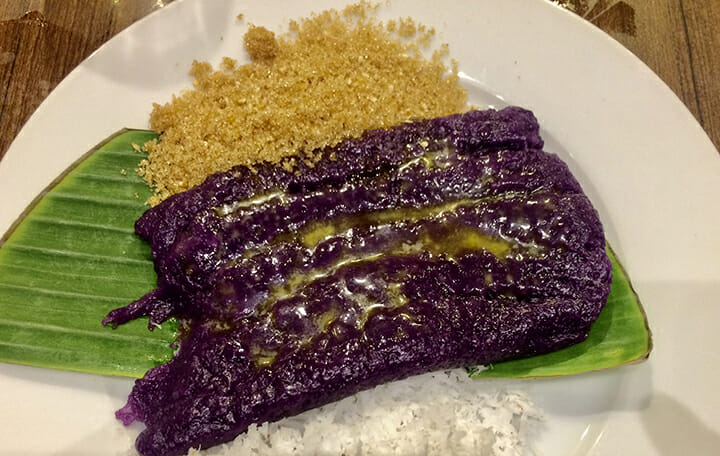
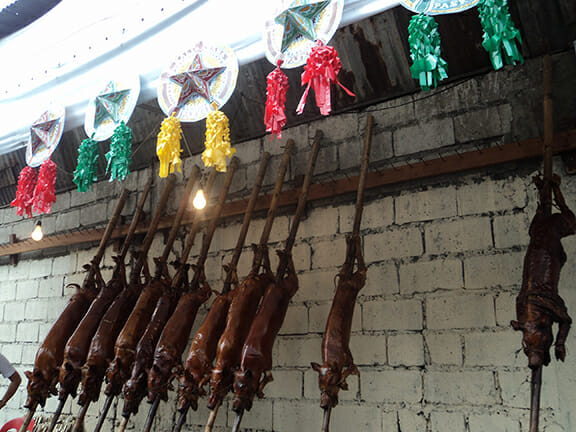
- Christmas caroling is a common tradition for kids. They go house to house serenading homeowners with Christmas songs, sometimes with fabricated musical instruments. They expect a token of appreciation for the music they bring though it’s not obligatory to always give money. Food or any gifts are welcome. Children do take advantage of the Christmas season to raise money to buy something they want. In the Filipino culture, there’s nothing wrong with that; it’s fun. Caroling is also done by adults or organizations who wish to fundraise. If you have a spare to share, why not live the spirit of Christmas? As the cliché goes, it’s better to give than to receive. And speaking of Christmas carols, I miss my favorite Christmas songs I heard every day on the radio while driving to work. The songs of the local icon, Jose Mari Chan, are popular and you’ll hear them starting on September 1. Two of my favorite songs are Christmas in our Hearts and Count your Blessings.

- A Parol is a unique Christmas decoration introduced by the Spaniards. It means lantern in Spanish, a representation of the biblical bright star that embodies light during times of darkness. A parol was originally star-shaped and made of bamboo with Japanese or crepe paper and coconut oil used to light it. The making of parol has evolved and now, you see different styles exquisitely constructed and displayed. During my elementary days, parol making was part of home economics. A parol-making contest is a popular fundraising activity during the Christmas season. Almost every house, street, mall, and hotel in the Philippines has a parol boasting creative designs and colorful lights that sparkle throughout the day and night. It looks festive which is the best part. Parol symbolizes Christmas in the Philippines and displays Filipino ingenuity. It is a beautiful tradition that Filipinos bring wherever they go.
The Philippines is a nation of faith and festivities, known to have the longest Christmas celebration in the world.Filipinos are fun-loving people and as a Filipino American, I am proud of these Christmas traditions.
Merry Christmas to all of you. Maligayang Pasko sa inyong lahat.













































